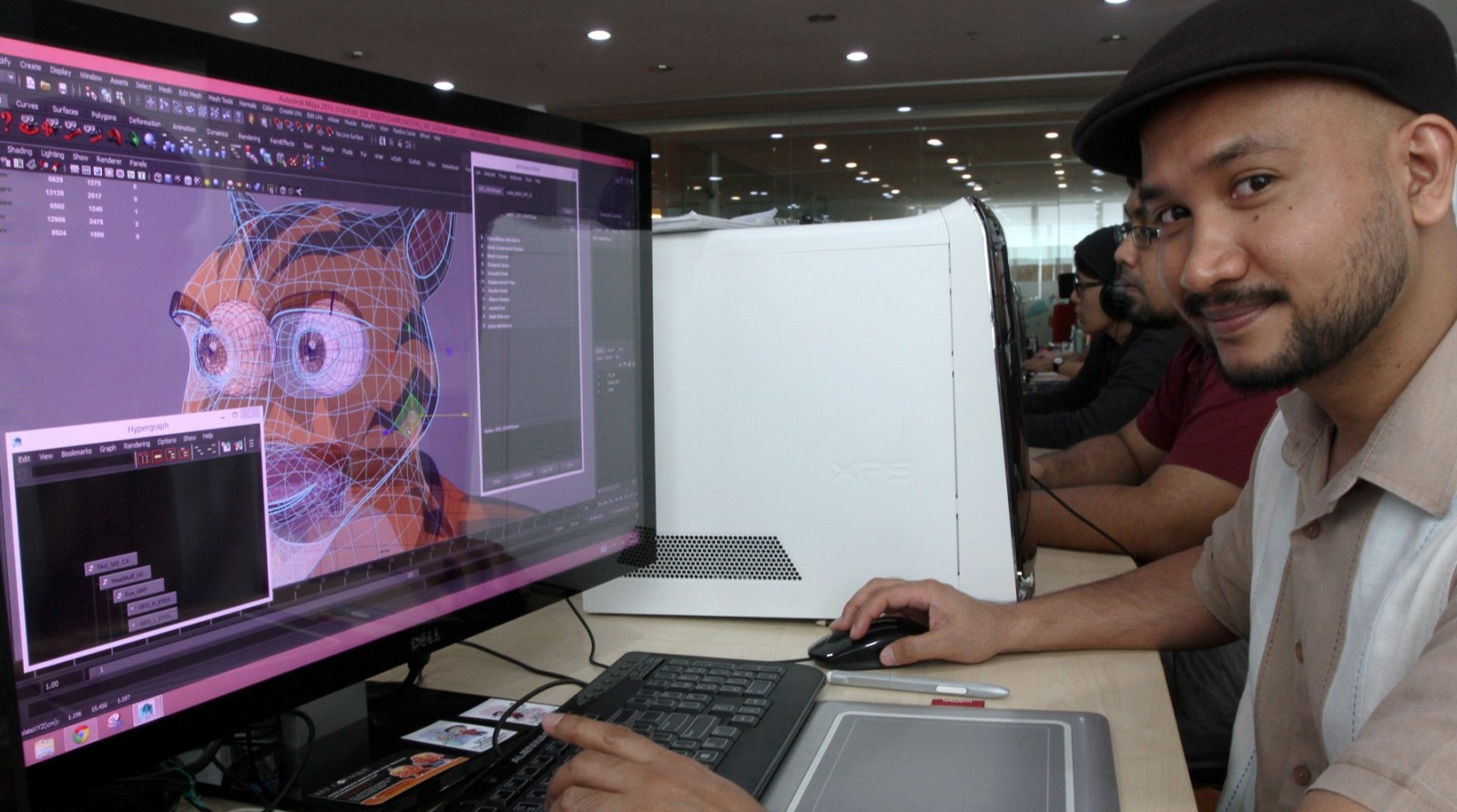By ELIZABETH WONG KAI YAN
alltherage@thestar.com.my
WHEN Azizul Hakim was studying animation in college, there were only 45 students in his class. Today, the Multimedia University lecturer’s classes have nearly doubled in size.
The animation programme at the university has swelled to 300 students, from 60 when Azizul, professionally known as “Joe”, first started lecturing 15 years ago.

Rimba Racer, the TV show directed by Azizul Hakim won international awards all the way from Korea and China! ― Photos by: SAMUEL ONG/The Star
Clearly, more young people are eager to get into the booming animation industry here in Malaysia, which is gaining international recognition.
“The number of people approaching us to outsource their projects here has increased over the years,” said Joe, director of the award-winning local animated show Rimba Racer.
“Plenty of award-winning animation and production houses in Malaysia produce world-class work for huge international clients and broadcasters.”
While there has been lots of international attention, locally, young animators have also enjoyed the support of the government.
For example, the Multimedia Development Corporation launched an initiative, the Intellectual Property Creators Challenge (IPCC), back in 2006 to provide a chance for young graduates to develop their ideas into something marketable.
“You never know, these ideas could really turn into a successful project,” said Joe. “In fact, Rimba Racer got its break at IPCC!”
These days, there is an increasing number of eager, bright-eyed newbies, and Joe has plenty of advice for them.
It’s important for students to keep tabs on the work of students from different schools, he said.
“See which animations get the most acclaim, and try to find out what made the work successful in the first place.
“Expose yourself to good work created by people from the same age group as you, to gauge whether you’re left behind or ahead of the game,” he added.
He also recommended graduates to get more exposure – both internationally and locally – to gain experience dealing with different people, projects, and working environments.
“Career-wise, there are plenty of mediums and platforms that require animation, so if you are able to cater to what a company or post requires, chances are high that you’ll get a job,” he said during an interview after the launch of Digital Campus Asean Edition, a region-wide competition aimed at promoting creativity and innovation among schoolchildren.
While job prospects seem to be good, young animators working in the advertising and television production sectors must be prepared to work longer hours than those in other sectors, warned Joe.
Of course, in return, they’re paid better than the average animator, who gets a starting salary of between RM1,800 and RM2,500 a month.
It’s also possible to make a lucrative career as a freelance animator like Laura Low, 26, who can charge anywhere from RM2,000 to RM50,000 per project, depending on its complexity and duration.
“The pros of freelancing is the flexibility,” said Low. “I get to choose the projects I want to do. I’m my own boss.”
The downside of being a freelancer, however, is the lack of financial security.
“Your income is uncertain, it depends on what job you get, and whether you have one or not the next month,” she said.
However, with some careful planning, it’s possible to work around the instability.
“To overcome this, I always have projects lined up for the next few months,” Low said. “That’s how I feel secure about my career.”






Tell us what you think!